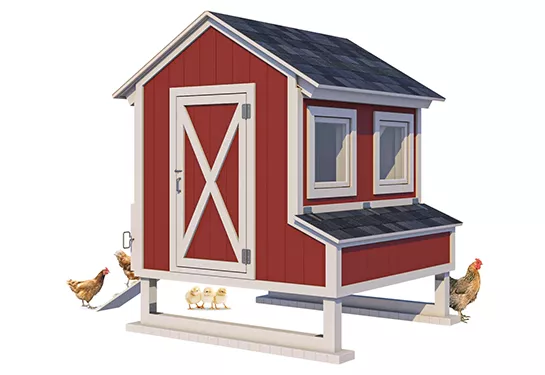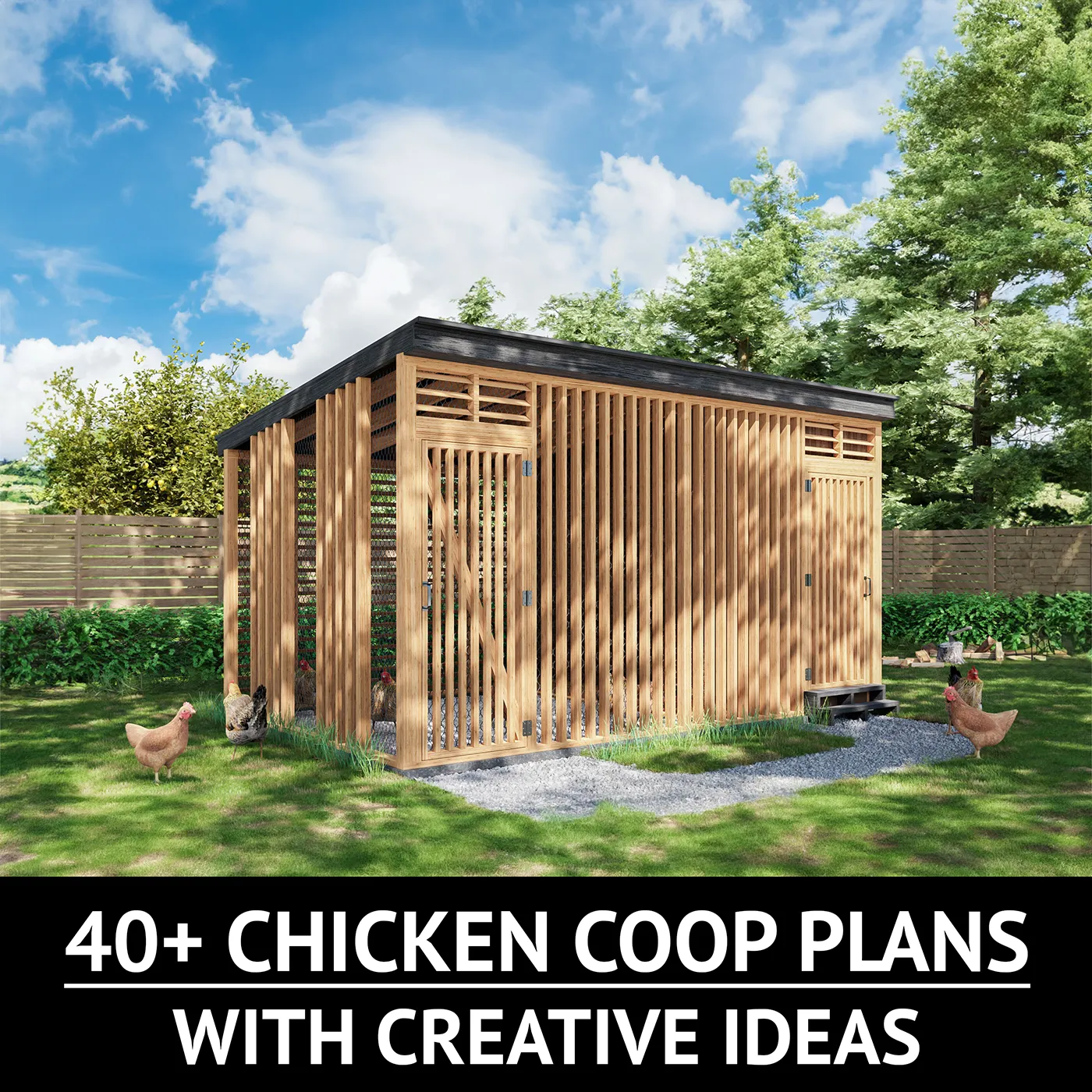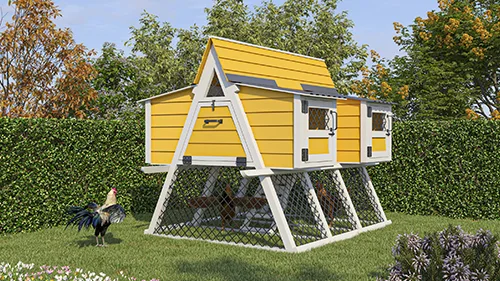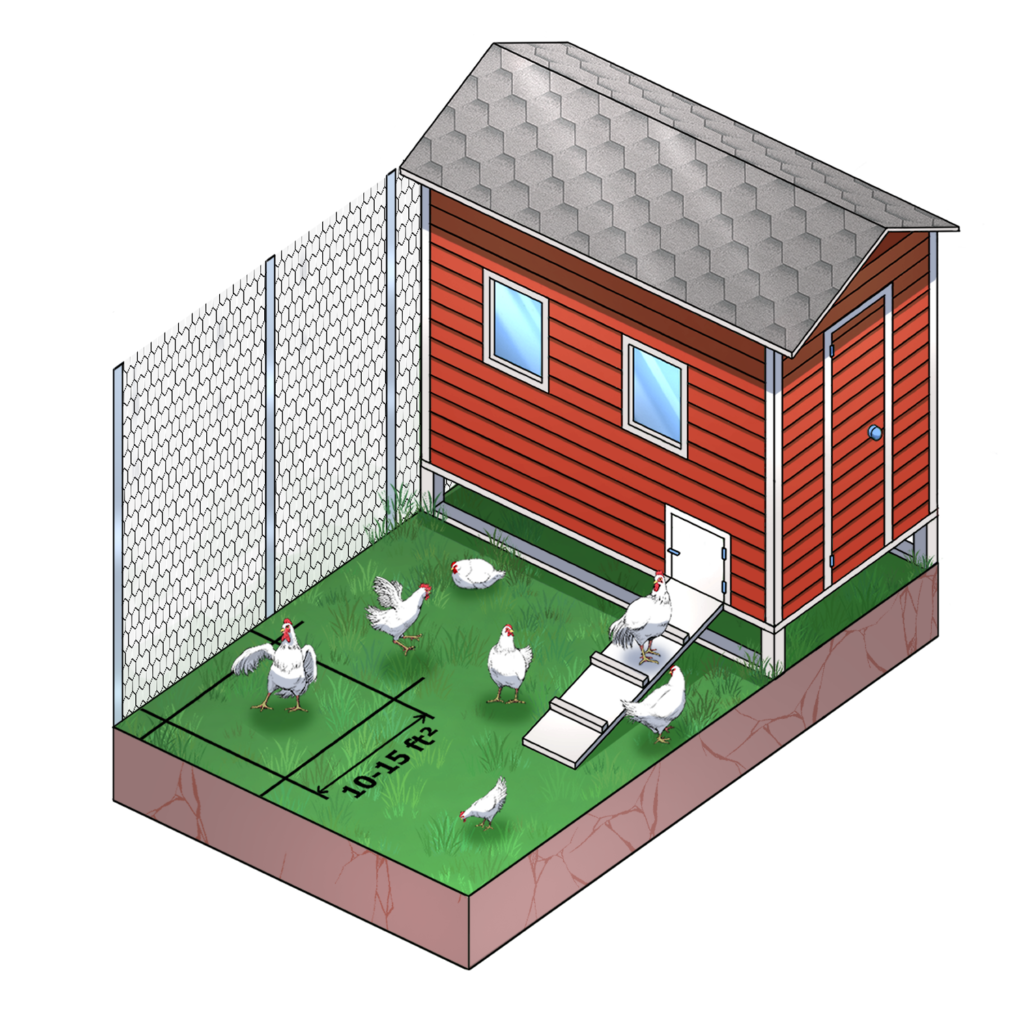DIY Chicken Coop Plans: 40+ Free Beginner Designs!
Our chicken coop plans are specifically designed to simplify the building process while ensuring safety and comfort for your birds. With basic construction skills, you can efficiently build a suitable home for your chickens without excessive time or expense. To assist you, we prepared these user-friendly, budget-conscious plans at no cost.

These free chicken coop plans offer sizes from small chicken coops to a large chicken houses. Additionally, they serve as a resource for chicken coop ideas, offering innovative designs and inspiration.
DIY Chicken Coop Plans
-
A-Frame Chicken Coop
Many people love A-frame chicken coops because they are budget-friendly, easy to build, and movable. These printable free A-frame chicken coop plans are professionally designed to help even amateur woodworkers build the intricate tall-standing coop. Once built, the coop will provide a home to 6 chickens, a fenced aviary, and nesting boxes to hold the eggs. The design allows you to collect eggs and clean up the coop from outside.
Capacity 6 chickens Dimensions 7 x 6 Difficulty to build Beginner friendly
Our Chicken Coop Plans Benefits
✓ Simplified process
Our plans take the complexity out of building a chicken coop, offering clear instructions and a materials list, ensuring a successful project, and saving you time and frustration.
✓ Save time and money
Our plans have all the required materials, making it easier to shop and save money. Additionally, following our plans can save you the time you would otherwise spend designing and constructing a chicken coop from scratch.
✓ Overcome zoning and location restrictions
By using our chicken coop plans, you can comply with local zoning ordinances and restrictions, making it easier to start your hobby of raising chickens without worrying about breaking any laws.
✓ Gain knowledge and expertise
Our chicken coop plans are designed to help anyone, regardless of their carpentry or construction experience, build a chicken coop with ease, making it possible for everyone to enjoy the benefits of raising chickens.
Selecting the Best Chicken Coop Design
Chicken coops provide a happy and healthy place for your flock to call home. Whether you are an aspiring chicken grower or an old pro, knowing the different types of chicken coops is crucial to the chicken-rearing hobby. This is vitally important because different coops are designed to hold different capacities.
Always remember it is important to build and maintain a chicken coop that is not seen as a nuisance or eye sore by neighbors. Most complaints about chickens being raised in developed areas are due to poorly designed or maintained coops that distract from the appearance of the neighborhood. The public always sees the worst-looking chicken coops and runs as an example of what to expect from everyone, which leads to more restrictions.
For the unacquainted, there are limitless ideas and coop designs — a chicken coop can be any shape or configuration imaginable. While you can easily find unusually elaborate chicken coops, most hen houses fall under the following types:
1. A-Frame Chicken Coop
Also known as Chicken Ark, an A-frame chicken coop is a small rectangular unit that keeps chickens confined. As the name suggests, it has two sharply sloping walls that meet off the ground, so the coop resembles the letter A. Despite being small, A-frame chicken coops have a nesting box or two, a roosting bar, and space for your chickens to move around. They are popular among beginner chicken growers and in cities where ordinances restrict chicken roaming.

A typical chicken ark is usually designed to host two to four chickens but can be designed with a larger capacity.
2. Chicken Tractor
A chicken tractor is a coop on wheels. The inspiration behind the design is the high level of functionality and movement they offer.

A chicken tractor can include a run or not, but the entire structure is usually lightweight for hassle-free moving. Because they are designed to be moved around, chicken tractors are also relatively compact. Grab bars, or wheelbarrow-like handles, are usually included on one end so you can lift and move the coop wherever and whenever needed.
The biggest issue with this design is the need to manage the movement of the coop. It is critical to move the coop often so you do not allow the area under the coop to become eaten down to damage the vegetation. Also, if you have a small lot, you can quickly develop a yard with patches of bare spots throughout the yard.
3. Walk-in Chicken Coop
As the name suggests, walk-in chicken coops are hen houses designed with a large access door so that you can walk in. This type of coop can be the chicken’s home, or they can provide a small door for the chickens to access the outdoors. It can be built from scratch or repurposed as a backyard storage shed. The most exciting thing about walk-in chicken coops is that they are usually permanent structures, and you can go as big as you want.

Because there’s more room inside, they are easier to clean. This style also allows you to add nesting boxes, roosting bars, enrichment, and accessories to create a more inviting environment for your flock. Many owners also build in a small storage area for storage of feed, equipment, and other supplies needed to clean or care for the birds.
No matter the size, an excellent all-in-one chicken coop should be easy to clean and save time.
4. All-in-one Chicken Coop
All-in-one chicken coops are elaborate and substantial hen houses with a walk-in coop (complete with enough nesting boxes and roosting bars) and a sizeable free range. They come in a wide range of sizes and shapes, so there is something for every flock.

No matter the size, an excellent all-in-one chicken coop should be easy to clean and save all time.







